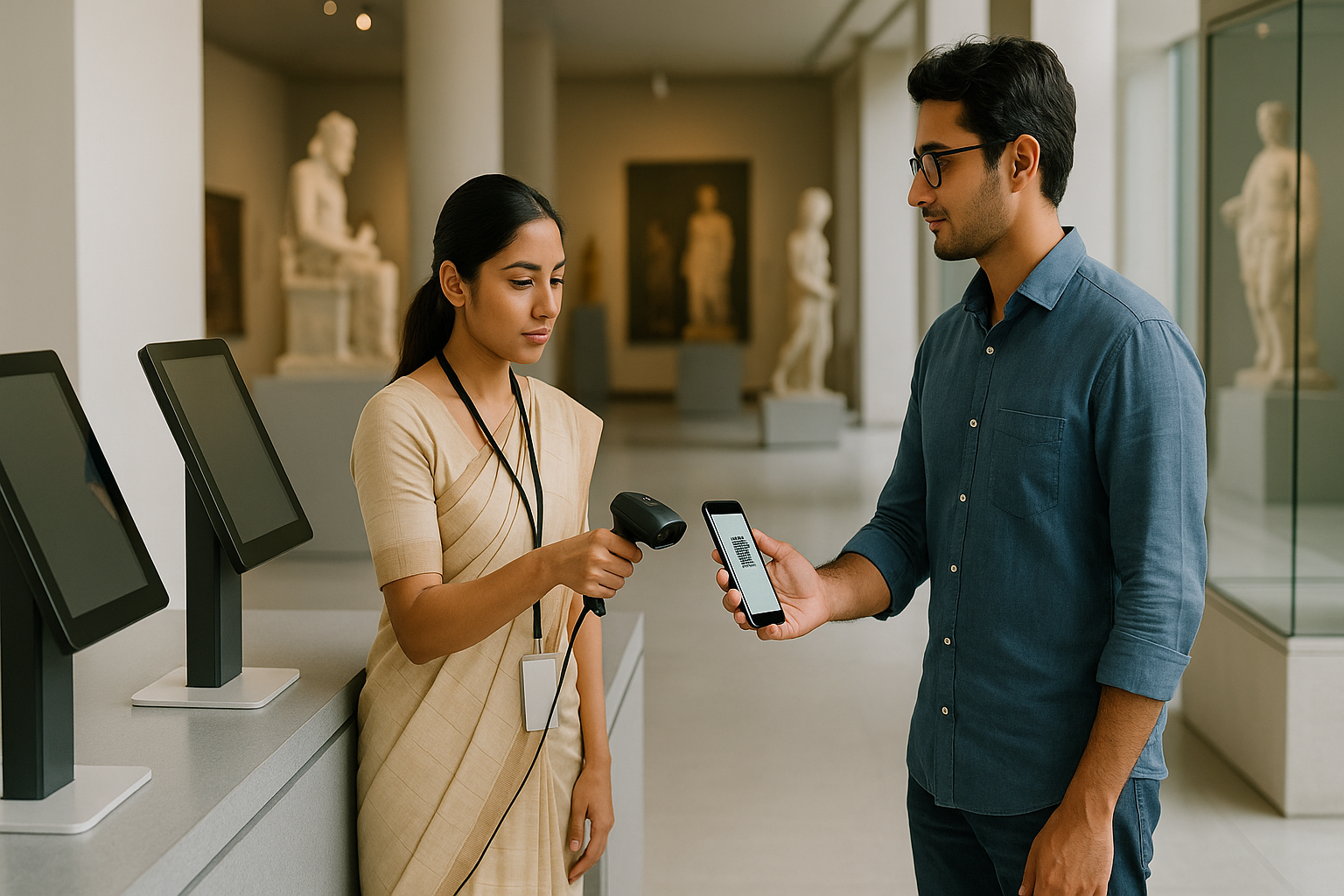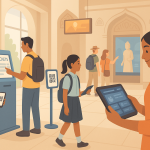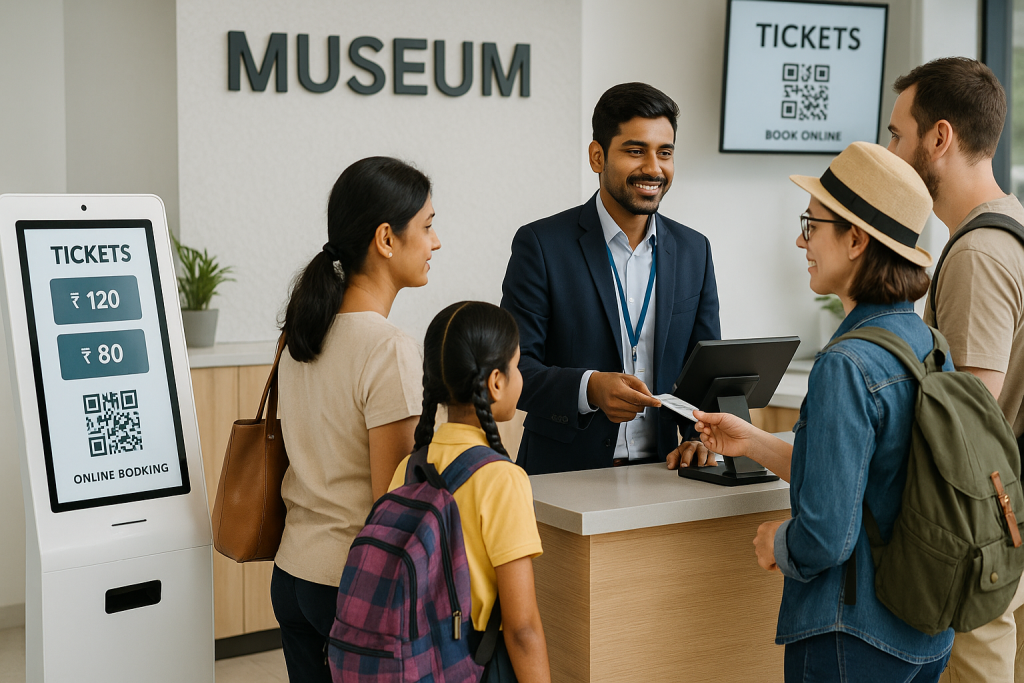Many museums still haven’t adopted ticketing software for museums and continue to rely on manual systems for ticketing and visitor check-ins. Staff often deal with long queues, paper tickets, and outdated tools. Visitors get frustrated with delays, and museums miss out on useful data. It slows everything down from entry to reporting.
But things are changing.
New ticketing software for museums helps solve these problems. With digital tools, you can speed up entry, cut down wait times, and track visitor data in real time. You no longer need to handle piles of paper or enter numbers into Excel sheets.
In this blog, we’ll look at five big problems museums face and how the right ticketing solution can fix them. If you run a museum and want smoother operations, faster check-ins, and better visitor experiences, this guide is for you.
Problem #1 – Long Queues at Entry Points
Long lines at the entrance frustrate both visitors and staff. During weekends or holidays, the problem gets worse. People wait too long just to get inside, and staff spend extra time checking printed tickets or typing names into spreadsheets.
This happens because of slow, manual ticket checks.
A smart queue management system fixes this. It lets visitors book timed-entry slots online. When they arrive, they simply show a QR code on their phone. Staff scan it, and the visitor enters in seconds.
No more manual lists. No more confusion at the gate.
Frontline staff also get real-time updates on upcoming visitor batches. They can plan better, stay alert, and keep the line moving even during the busiest hours.
The result? Shorter queues. Happier visitors. Smoother entry.
Problem #2 – Paper-Based Ticketing & Lost Revenue
Paper tickets often cause problems. Visitors lose them, they get damaged, or the print fades. Staff struggle to match records later, especially when the museum gets busy. It takes time, creates errors, and leads to lost revenue.
Manual reconciliation is slow. There’s no way to track trends, no backup if something goes wrong, and no clear insight into what’s working.
Digital ticketing fixes all of this.
With a digital system, every visitor gets an e-ticket by email or text. Staff scan the QR code, and the system records the entry instantly. You don’t need to store paper copies or type anything later. The software also keeps automatic backups and flags duplicate or fake entries.
It’s faster, safer, and smarter.
In fact, museums using digital ticketing see up to 25% more pre-bookings, especially during special events and weekends.
Problem #3 – Slow Check-Ins & Staff Overload
When check-ins happen manually, everything slows down. Staff have to write down visitor names, check IDs, and manage entry logs by hand. It takes time and often leads to mistakes especially when large groups arrive together.
This overloads your front desk team. They get tired, lines get longer, and visitors become impatient.
A smart museum entrance management system changes the game.
With handheld scanners, staff can check in visitors instantly using QR codes. For school trips or tour groups, the system allows automated group check-ins, no need to scan every single ticket. Some platforms even connect with ID verification tools, adding extra security without extra work.
It’s quick, efficient, and stress-free.
Your staff stay focused. Visitors enjoy a smooth welcome. And your entry process runs like clockwork.
Problem #4 – No Real-Time Reporting or Insights
Many museums still rely on paper logs or Excel sheets to track visitors. But these methods don’t give you real-time data. You can’t see how many people are inside right now, which ticket types are selling most, or when your museum is the busiest.
This lack of visibility makes it hard to plan, staff properly, or improve operations.
Modern museum visitor management software gives you the insights you need all in one dashboard. You can track daily footfall, ticket types, and visitor flow across different time slots. Heatmaps show which hours are busiest, helping you adjust your staffing or open new counters when needed.
These real-time reports help museum directors make faster, smarter decisions. You no longer need to guess what’s happening now, you know it.
Problem #5 – Integration Nightmares with Other Systems
Running a museum involves more than just ticketing. You may also use software for CRM, donations, gift shops, or newsletters. But if your ticketing system doesn’t connect with these tools, things quickly get messy.
You end up entering the same data in multiple places. That wastes time and increases the chance of mistakes.
The best ticketing software for museums avoids this headache. It comes with plug-and-play integrations or open APIs that connect smoothly with your other systems. Whether it’s a CRM, POS, email tool, or payment gateway, the right platform makes everything work together.
You don’t need to hire developers or wait for custom fixes.
Key Tip: Always choose software that offers built-in CRM and payment integrations. It saves time, reduces manual work, and keeps all your systems in sync.
Features to Look For in a Museum Ticketing Software
Not all ticketing software is the same. If you’re planning to upgrade, look for features that make daily operations easier for both staff and visitors.
Here are some must-have features to check:
- Cloud-Based Access for Admins
Manage everything from anywhere. Cloud-based systems let you track sales, edit schedules, or view reports without needing to be on-site. - Mobile Ticket Validation
Let staff scan tickets using handheld devices or smartphones. It speeds up check-ins and avoids bulky hardware. - Support for Memberships & Group Visits
Easily manage member check-ins, renewals, and special access. Group ticketing makes school trips and tour groups quick to register and check in. - Support for Kiosks and Multi-Lingual UI
Give visitors the option to self-check-in using kiosks. A multi-language interface helps international guests feel welcome and makes the process smoother.
Choosing the right features helps your museum save time, delight visitors, and grow smarter.
How to Choose the Right Ticketing Platform
There are many ticketing solutions out there, but not all are built for the needs of modern museums. If you’re at the decision stage, focus on what actually matters for smooth operations and better visitor experiences.
Use this table as a quick guide:
| Feature | Why It Matters | Must-Have? |
| QR Code Ticketing | Speeds up entry and avoids physical contact | ✅ |
| Real-Time Reporting | Helps you track footfall, sales, and trends | ✅ |
| Mobile & Kiosk Friendly | Offers flexibility and faster check-ins | ✅ |
| CRM + Email Integration | Makes it easier to run campaigns and follow-ups | ✅ |
| Cloud Dashboard | Lets you manage everything remotely | ✅ |
If a ticketing platform doesn’t offer all of these, it may slow you down later. Look for solutions that are easy to use, future-ready, and built with museums in mind.
Case-in-Point – How One Museum Transformed Operations
Let’s take a real example.
The Museum of Art & Photography (MAP) in Bangalore is one of India’s leading modern museums. Before going digital, MAP faced many of the same issues most mid-sized museums deal with: long entry queues, manual ticketing, and time-consuming visitor logs.
They decided to switch to a digital museum booking platform.
Within just 3 months of using our system:
- Entry wait times dropped by 40%
- Visitor satisfaction ratings improved by 2.3x
- Monthly reports were automated and emailed to directors without manual effort
The team at MAP now spends less time on entry management and more time creating better visitor experiences. Everything from ticketing to visitor data and reporting runs smoothly through one connected platform.
MAP’s digital shift shows how the right tools can modernize museum operations quickly and effectively.
Final Thoughts – Ready to Modernize Your Museum?
If you’re still dealing with paper tickets, long queues, or no visitor data, it’s time to move forward. The right ticketing software for museums does more than sell tickets. It helps you run your museum more smoothly, welcome visitors faster, and make smarter decisions.
You don’t have to keep doing things the hard way.
Want to see how it works?
Fill out our quick inquiry form and book a free demo. We’ll show you how museums like MAP Bangalore are already benefiting and how your museum can too.



